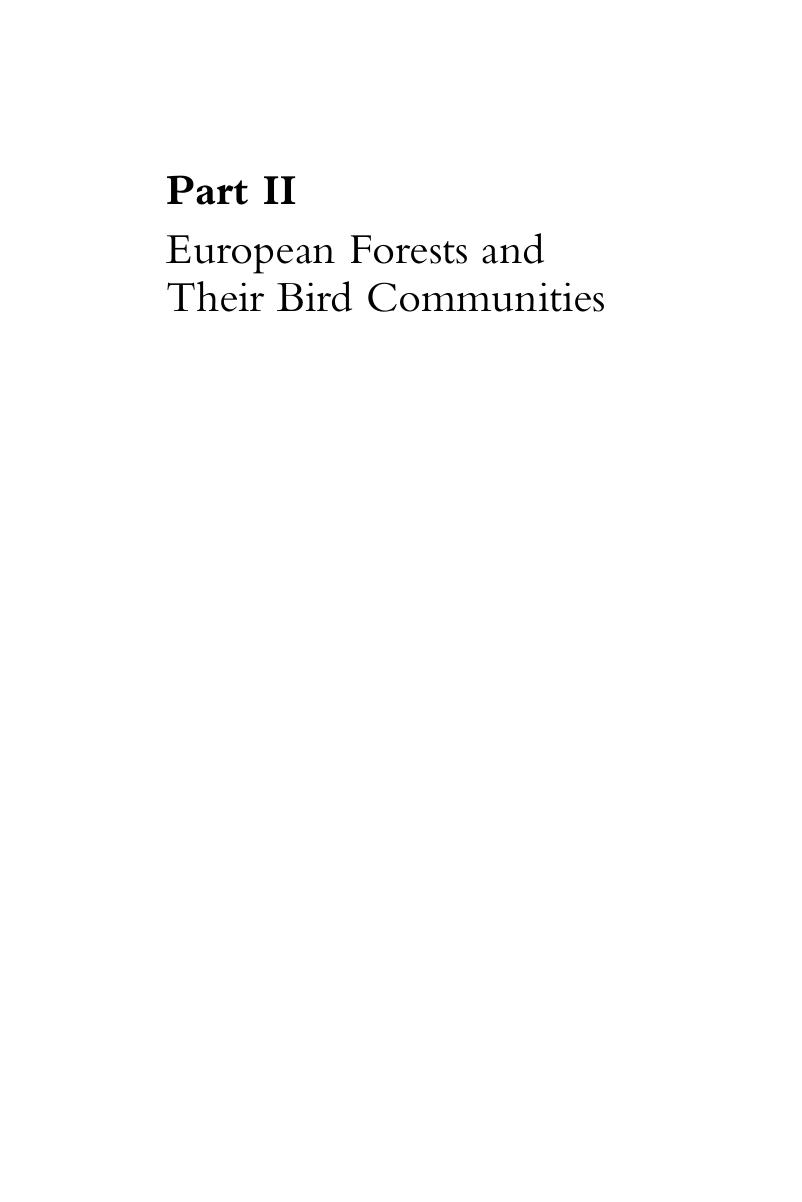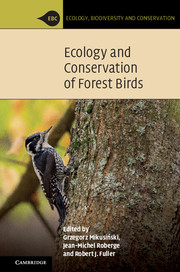Book contents
- Ecology and Conservation of Forest Birds
- Ecology, Biodiversity and Conservation
- Ecology and Conservation of Forest Birds
- Copyright page
- Contents
- Acknowledgements
- Contributors
- 1 Introduction
- Part I Forest Birds and Their Adaptations
- Part II European Forests and Their Bird Communities
- Part III Conservation and Management
- Species Index
- Subject Index
- References
Part II - European Forests and Their Bird Communities
Published online by Cambridge University Press: 15 March 2018
- Ecology and Conservation of Forest Birds
- Ecology, Biodiversity and Conservation
- Ecology and Conservation of Forest Birds
- Copyright page
- Contents
- Acknowledgements
- Contributors
- 1 Introduction
- Part I Forest Birds and Their Adaptations
- Part II European Forests and Their Bird Communities
- Part III Conservation and Management
- Species Index
- Subject Index
- References
Summary

- Type
- Chapter
- Information
- Ecology and Conservation of Forest Birds , pp. 135 - 386Publisher: Cambridge University PressPrint publication year: 2018
References
References
References
References
References
References
References
- 1
- Cited by



